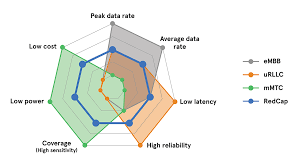Top 5G Planning Certification Questions You Need to Know
telcomatraining.com – As the world transitions to ultra-fast connectivity, professionals in telecommunications are racing to stay ahead in 5G technology. One of the most effective ways to prove your expertise in this field is by obtaining a 5G planning certification. Whether you’re preparing for your first 5G exam or simply want to enhance your understanding, knowing the key questions that often appear can be a game changer.
In this article, we’ll explore the top 5G planning certification questions you should know, along with the concepts behind them to help you prepare more efficiently.
1. What Are the Key Differences Between 4G and 5G Architecture?
This question evaluates your understanding of the evolution in network infrastructure. In 4G, the architecture is based on a centralized network model, while 5G moves toward a more decentralized, cloud-native, and service-based architecture. Key differences include:
- Network slicing capabilities
- Use of millimeter waves
- Massive MIMO support
- Enhanced mobile broadband (eMBB) and ultra-reliable low-latency communication (URLLC)
Understanding these core changes is crucial for designing and planning a 5G network.
2. How Does Beamforming Work in 5G Networks?
Beamforming is a foundational technology in 5G that helps improve signal strength and efficiency. Unlike traditional antennas that send signals in all directions, beamforming uses advanced algorithms to direct signals precisely toward the user’s location. This results in:
- Better signal quality
- Increased data rates
- Reduced interference
Candidates are expected to understand how beamforming supports 5G goals, especially in high-frequency environments like mmWave.
3. What Factors Affect 5G Radio Network Planning?
This question explores your knowledge of radio access network (RAN) design. Factors to consider in 5G planning include:
- Frequency band selection (low, mid, and high)
- Cell site density
- User equipment (UE) distribution
- Terrain and urban clutter
- Capacity and coverage goals
Understanding these factors ensures efficient spectrum usage and cost-effective deployment.
4. What Is Network Slicing and Why Is It Important in 5G?
Network slicing allows operators to create multiple virtual networks within a single physical infrastructure. Each “slice” can be optimized for different services or customer needs. For example:
- One slice for IoT applications requiring low bandwidth but high reliability
- Another for AR/VR demanding high throughput and low latency
5G planning professionals must understand how to design and allocate resources for multiple slices without causing interference or performance degradation.
5. How Is Site Acquisition and Permitting Different in 5G Deployments?
Due to the increased number of small cells needed in 5G (especially in urban areas), site acquisition becomes more complex. Candidates should be aware of:
- Local zoning laws
- Infrastructure sharing
- Aesthetic and environmental considerations
- Faster deployment timelines compared to traditional macro sites
This area tests your real-world knowledge and project management skills, both vital for successful 5G rollouts.
Final Thoughts
Preparing for a 5G planning certification requires more than memorizing definitions. You need a solid grasp of real-world applications, technological trends, and planning strategies that align with the future of mobile networks. By focusing on these key questions and the concepts behind them, you can enhance your readiness for certification exams and position yourself as a valuable asset in the telecommunications industry.
Stay curious, keep learning, and embrace the shift to next-generation networks.







